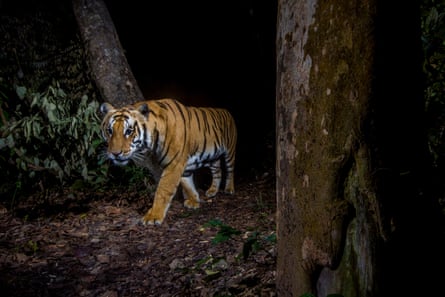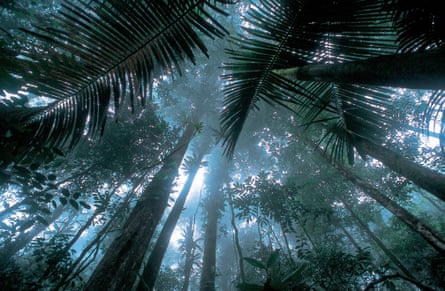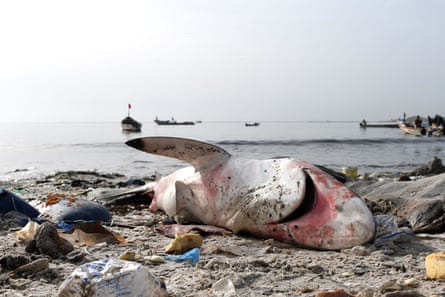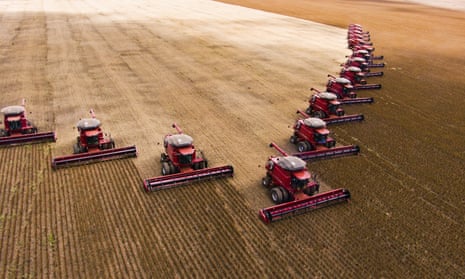Wildlife populations are in freefall around the world, driven by human overconsumption, population growth and intensive agriculture, according to a major new assessment of the abundance of life on Earth.
On average, global populations of mammals, birds, fish, amphibians and reptiles plunged by 68% between 1970 and 2016, according to the WWF and Zoological Society of London (ZSL)’s biennial Living Planet Report 2020. Two years ago, the figure stood at 60%.
The research is one of the most comprehensive assessments of global biodiversity available and was complied by 134 experts from around the world. It found that from the rainforests of central America to the Pacific Ocean, nature is being exploited and destroyed by humans on a scale never previously recorded.
The analysis tracked global data on 20,811 populations of 4,392 vertebrate species. Those monitored include high-profile threatened animals such as pandas and polar bears as well as lesser known amphibians and fish. The figures, the latest available, showed that in all regions of the world, vertebrate wildlife populations are collapsing, falling on average by more than two-thirds since 1970.
Q&AWhat is biodiversity and why does it matter?
Show
Biodiversity – short for biological diversity – is the variety of life on Earth, from the tiniest bacteria to the largest mammals. The air we breathe, the water we drink and the food we eat all rely on it – without plants there would be no oxygen and without bees to pollinate there would be no fruit or nuts.
Scientists are still trying to understand how the web of life fits together and, despite advances in technology, we can still only guess at the true number of species on our planet. But Earth is experiencing the largest loss of life since the dinosaurs, and humans are to blame. The way we mine, pollute, hunt, farm, build and travel is putting at least one million species at risk of extinction, say experts. The sixth mass extinction in geological history has already begun, some scientists assert, with billions of individual populations being lost.
The five biggest threats to biodiversity are: changes in land and sea use; direct exploitation of natural resources; the climate crisis; pollution and invasive species.
The extinction of animals, insects, plants, and all living things has huge knock-on effects. Species have to work together in harmony in order to thrive and provide the essential services humans need to survive. The services provided by ecosystems are estimated to be worth trillions of dollars. About half of global GDP – equal to $42tn (£37tn) – is dependent on the healthy functioning of the natural world, according to the UN.
The world has so far failed to meet any UN targets on halting the loss of nature but new targets will be set at the Cop15 biodiversity summit in Montreal in December 2022.
Robin Freeman, who led the research at ZSL, said: “It seems that we’ve spent 10 to 20 years talking about these declines and not really managed to do anything about it. It frustrates me and upsets me. We sit at our desks and compile these statistics but they have real-life implications. It’s really hard to communicate how dramatic some of these declines are.”
Latin America and the Caribbean recorded the most alarming drop, with an average fall of 94% in vertebrate wildlife populations. Reptiles, fish and amphibians in the region were most negatively affected, driven by the overexploitation of ecosystems, habitat fragmentation and disease.

Africa and the Asia Pacific region have also experienced large falls in the abundance of mammals, birds, fish, amphibians and reptiles, dropping 65% and 45% respectively. Europe and central Asia recorded a fall of 24%, while populations dropped 33% on average in North America. To form the Living Planet Index (LPI), akin to a stock market index of wildlife, more biodiverse parts of the world, such as tropical regions, are given more weighting.
Experts said the LPI was further evidence of the sixth mass extinction of life on Earth, with one million species at risk because of human activity, according to the UN’s global assessment report in 2019. Deforestation and the conversion of wild spaces for human food production have largely been blamed for the destruction of Earth’s web of life.
The report highlights that 75% of the Earth’s ice-free land has been significantly altered by human activity, and almost 90% of global wetlands have been lost since 1700.
Mike Barrett, executive director of conservation and science at WWF, said: “Urgent and immediate action is necessary in the food and agriculture sector. All the indicators of biodiversity loss are heading the wrong way rapidly. As a start, there has got to be regulation to get deforestation out of our supply chain straight away. That’s absolutely vital.”
Freshwater areas are among the habitats suffering the greatest damage, according to the report, with one in three species in those areas threatened by extinction and an average population drop of 84%. The species affected include the critically endangered Chinese sturgeon in the Yangtze River, which is down by 97%.
Using satellite analysis, the report also finds that wilderness areas – defined as having no human imprint – only account for 25% of the Earth’s terrestrial area and are largely restricted to Russia, Canada, Brazil and Australia.

Tanya Steele, chief executive at WWF, said: “We are wiping wildlife from the face of the planet, burning our forests, polluting and over-fishing our seas and destroying wild areas. We are wrecking our world – the one place we call home – risking our health, security and survival here on Earth.”
Sir David Attenborough said that humanity has entered a new geological age – the anthropocene – where humans dominate the Earth, but said it could be the moment we learn to become stewards of our planet.
“Doing so will require systemic shifts in how we produce food, create energy, manage our oceans and use materials. But above all it will require a change in perspective,” he wrote in a collection of essays accompanying the report.
“The time for pure national interests has passed, internationalism has to be our approach and in doing so bring about a greater equality between what nations take from the world and what they give back. The wealthier nations have taken a lot and the time has now come to give.”

While the data is dominated by the decline of wildlife populations around the world, the index showed that some species can recover with conservation efforts. The blacktail reef shark in Australia and Nepalese tiger populations have both shown signs of recovery.
ZSL research associate Louise McRae, who has helped compile the LPI for the last 14 years, said: “Whilst we are giving a very depressing statistic, all hope is not lost. We can actually help populations recover.
“I feel frustrated by having to give a stark and desperate message but I think there’s a positive side to it as well.”
A separate study released today by Newcastle University and BirdLife International says that at least 28 bird and mammal extinctions have been prevented by conservation efforts since the UN Convention on Biological Diversity came into force in 1993.
Find more age of extinction coverage here, and follow biodiversity reporters Phoebe Weston and Patrick Greenfield on Twitter for all the latest news and features
